Whether you’re just entering the market or are a stock market veteran, investing in stocks comes down to making your invested cash worth more over time. And this comes not just by an S&P 500 Index that maybe moves up, but by making the time and effort to invest in companies that are growing their revenue and profits as well as their intrinsic value.
You are reading this because you are an active investor. That puts you ahead of millions in the U.S. who don’t want to do their homework for investing. My job used to be working with institutions to trade and invest in markets around the globe — particularly in the bond markets, as I am at my core a banker and credit guy. And later I did the investing for folks.
But in modern times, my job at Profitable Investing is to provide my ongoing take on economic and market developments and the best investments for growth and income.
My quick guidance for you is to think about building a portfolio for growth stocks with a base of dependable sector companies. Then the second story is to add some mid-level companies with proven capability to build revenue and value. And then add the top level of higher-growth-potential companies that come with some risks.
And for each level, dividends come into the decision process. Dividends aren’t just about cash for retirement living. They are about companies that consider shareholders as primary owners of their businesses. And dividends pay you to be patient through downturns. And they can be piled up and strategically invested again in more stock to further grow the bottom line of your portfolio.
And as an old adage that I use, I’ve never met a man gone broke with regular checks coming in.
The Foundation
A good growth portfolio starts with a solid foundation of dependable companies. And for me, this means two sectors: utilities and real estate investment trusts (REITs). Utilities are essential services companies. They have sticky customers who will continue to demand and pay for more power and other must have services. And REITs represent real assets of land and improvements that will be there for years. The best of them generate appreciation in their intrinsic value.
And both utilities and REITs also pay shareholders along with their executives with income.
And the combination of building intrinsic value and dividends is a proven combination for growth. Over the past trailing decade, utilities as measured by S&P’s Utility Index have generated a return of 196.43% for an annual equivalent of 11.47%. And REITs as measured by the Bloomberg REITs Index have returned 122.95% for an annual equivalent of 8.34%.
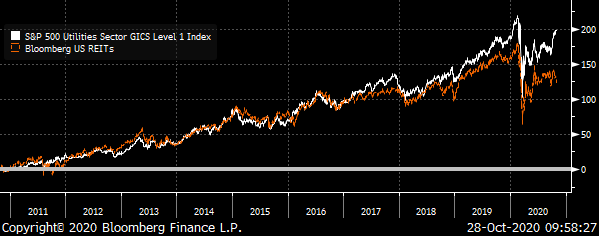
For a great utility I suggest NextEra Energy (NYSE:NEE) which just split its stock 4 for 1 to become more accessible for individual investors. This company has a base of regulated power business serving Florida — but has then in turn capitalized on the unregulated growth sector of providing power around the rest of North America. And not just any power — but ESG (Environmental, Social & Governance) friendly green power.
It is one of the world’s largest wind and solar companies by capacity. And it makes the most of all of its operations both current and expanding. Its revenue over the long haul continues to rise with an average annual rate of 5.03% on a compound annual growth rate (CAGR).
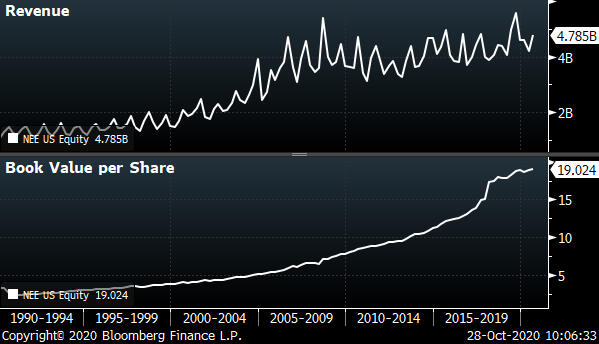
And the company’s intrinsic value (book) meaning its net value of asset and beyond continue to rise over the long haul by an average of 6% (CAGR).
Next is a REIT, and one of the long-proven leaders in a wide variety of properties. in WP Carey (NYSE:WPC). This is a company that I’ve known and followed since it came to the public market back in the 1990s. Founded by William (Bill) Polk Carey a descendant of the former U.S. president, the company is the global leader in sale-leaseback transactions.
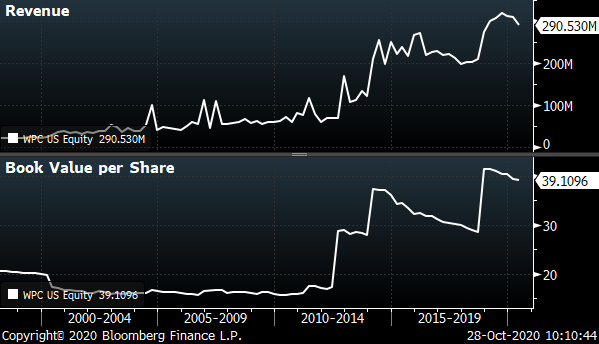
This is the business model that has WPC buying existing properties from major companies and governments and in turn leasing them back to the same sellers. This means that WPC gets great properties with tenants that are locked in for long-term leases. And the tenants pay leases on a triple-net basis, including upkeep, taxes and insurance. WPC avoids all sorts of cost issues and gets dependability.
And the company has a history of hiking dividend payments quarter after quarter for decades.
Second Story
The next level of a constructed growth portfolio should be adding some companies’ stocks that are growing their businesses with a bit more opportunity along with some measured risk. One of my favored sectors for growth during all sorts of economic and market conditions remains in asset managers. Asset managers get paid on assets under management (AUM). And they don’t have to be the best or worst — just good enough in managing assets to keep AUM and be able to attract more.
This business model is now getting the attention that I have been touting for years. Trian Management, led by Nelson Peltz, is grabbing Janus Henderson (NYSE:JHG) and Invesco and advocating that the industry is a huge value. And Morgan Stanley (NYSE:MS) is grabbing Eaton Vance (NYSE:EV) for the benefits of reliable growth and income.
My recommendation is for BlackRock (NYSE:BLK). This is one of the largest managers based on AUM and runs money for countless investors in both active and passive funds including its massive ETF portfolio.
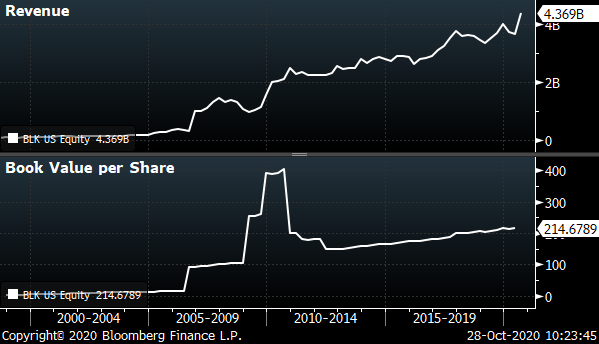
It runs money for governments around the globe, including for the U.S. government including for all Federal Employees retirement accounts. And of course, it also is under contract with the Federal Reserve to guide it on bond and credit buying.
Revenues keep climbing on an average basis of 19.99% (CAGR) and its intrinsic value — aided by rising AUM is gaining on average by 24.93% (CAGR).
Top Level
The top level of a growth portfolio construction is about ever-higher revenue growth and intrinsic business value expansion. And one of the best sectors in modern times for this construction is in technology. And one of the must haves in the technology market is Microsoft (NASDAQ:MSFT).
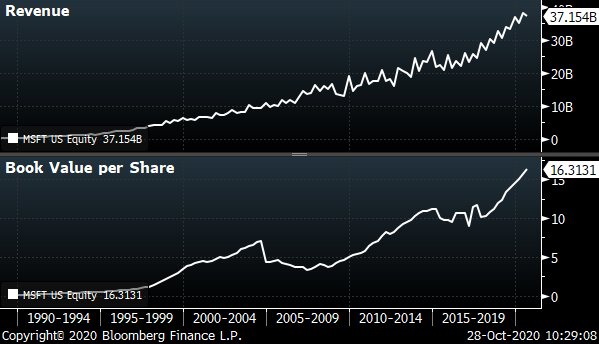
Microsoft may be well known to you, but for me, it is a transforming company. It used to be a company with boxed software that depended on unit sales of personal computers (PCs) to move more product. That was a doomed business model. And while its well-known peers try to say that they are moving away from unit sales to recurring sales of ongoing services and products, Microsoft is, for me, the posterchild of how this works.
It now sells software by subscription for operating and productivity products. And it moved on cloud services early and is now right at the top of this market. And it also is a leader in electronic games, remote communications and other products and services that are must haves in the evolving economy and markets.
Revenue keeps climbing by an average of 17.7% (CAGR) and its intrinsic value keeps building up by an average of 18.75% (CAGR).
This is a proven technology growth company.
From the foundation, to the midlevel to the top — these areas and stocks should get you started in building a growth portfolio for into 2021 and beyond. And that portfolio will pay you dividends along the way.
On the date of publication, Neil George did not hold (either directly or indirectly) any positions in the securities mentioned in this article.
As the editor of Profitable Investing, Neil George helps longer-term investors achieve their growth & income goals with less risk. With 30+ years of experience in the financial markets, Neil recommends undiscovered and underappreciated companies that offer subscribers double-digit yields now and triple-digit returns over time.
